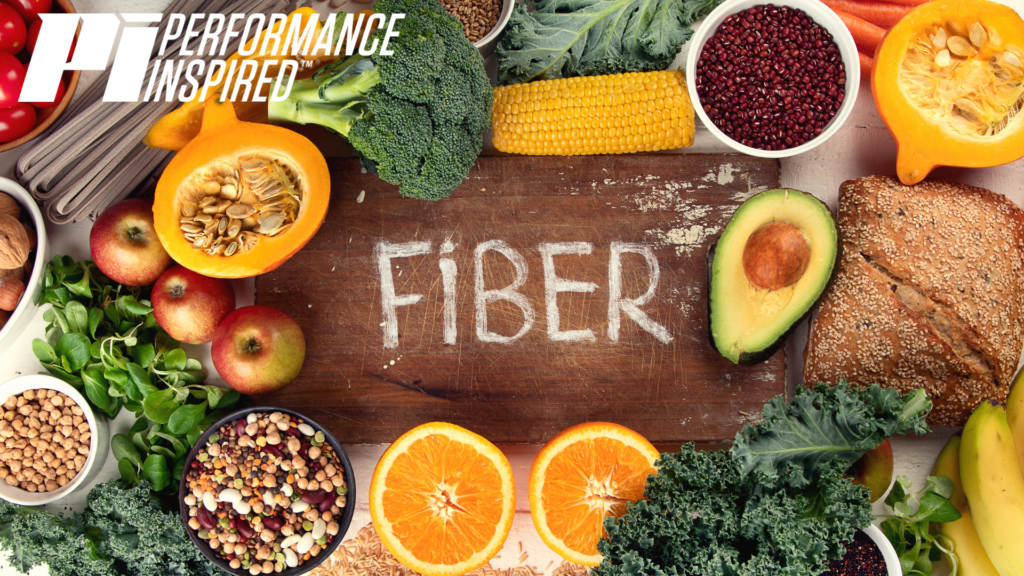The Amazing Benefits of Fiber

If I told you that there was a simple way to help control your blood sugar level, maintain a healthy weight, lower your cholesterol, reduce the risk of developing cardiovascular disease, and help maintain healthy bowels, would you do it? I think most people would!
Well, there is a simple way to reap all those benefits. It begins with fiber.
What is fiber?
Fiber is a type of carbohydrate that the body cannot digest. As such, it is vital to the healthy functioning of our bodies. Fiber comes in two forms based on its solubility. Fiber can be soluble or insoluble.
Soluble fiber dissolves in water. When it does so, it forms a gel-like substance. This then slows the rate of digestion and makes us feel fuller longer. How does this help in weight management? Well, if we don’t feel hungry, we won’t be tempted to snack or overeat. Further, soluble fiber helps regulate cholesterol levels and blood sugar by slowing down their absorption in our blood. A diet that is rich in soluble fiber also promotes immunity and gut health. Good sources of soluble fiber include beans, citrus fruits, apples, peas, oats, barley, and carrots.
Insoluble fiber does not dissolve. Therefore, it passes through our gastrointestinal tract almost completely intact. Insoluble fiber helps with the regulation of bowels and helps prevent constipation. Good sources of insoluble fiber include nuts, whole wheat flour, wheat bran, beans, and vegetables such as cauliflower and green beans.
How much fiber do I need each day?
Our fiber needs change as we get older. Men under 50 need 38 grams per day, while men over 50 need 30. Women under 50 need 25 grams per day, while women over 50 need 21.
To put that into perspective, let’s look at the fiber content of some common foods:
- A cup of cooked broccoli has 5 grams of fiber.
- A cup of boiled brussels sprouts has 4 grams.
- One medium raw carrot has 1.5 grams.
- A cup of raspberries has 8 grams.
- A medium-sized apple has 4.5 grams.
- A cup of strawberries has 3 grams.
- Whole wheat spaghetti (cooked, of course) has 6 grams.
- Oatmeal has 5 grams.
- Brown rice, whole wheat bread, and quinoa have between 2 and 5 grams.
Becoming aware of the fiber content in foods will help us reach our daily intake goal. And if we make the effort to get some fiber with each meal and in our snacks, we should have no trouble reaching that goal.
Something to keep in mind is that, depending on your age and whether you’re a man or woman, you should aim for between 7 and 13 grams of fiber per meal. Once you’re aware of how much you need with each meal, it’s easier to fill up your plates with the foods that will get you there.
Benefits of a high-fiber diet
A 2019 Cleveland Clinic article reports that “researchers found that people who ate between 25 and 29 grams of fiber per day saw a 15 to 30% decrease in their risk of developing heart disease, diabetes and colon cancer.”
That’s certainly incentive to add more fruits, vegetables, and whole grains into our diets!
Let’s look at some of the benefits we will reap when we increase the fiber in our diets.
First, it helps regulate bowel movements, which of course leads to better bowel health. This is so because the fiber increases both the weight and size of the stool. But it also makes it softer, so it’s easier to pass. This in turn leads to fewer instances of constipation.
In addition, a diet high in fiber may help lower your risk of developing hemorrhoids and diverticular disease.
Studies have also found that a diet high in fiber helps lower your risk for colorectal cancer. And it may help reduce inflammation within the body.
Because fiber helps slow the absorption of sugar, it also helps improve blood sugar levels. This may be of great benefit from those suffering from type 2 diabetes.
Small diet modifications make a difference
Sometimes we need to make big changes to our diets, and sometimes we need only slight modifications. Depending on your current diet, you may fall into the former category or the latter. Either way, here are some great tips for adding more fiber into your diet.
Begin at breakfast. If you eat cereal for breakfast, choose one high in fiber. Look for something that is made of whole grains or bran.
If you eat toast or bagels in the morning, choose breads made with whole grains. Read the labels and make sure that the first ingredient on the list is whole grain or whole wheat flour.
At lunch and dinner time, ditch the white rice and pastas and opt for brown or whole wheat instead. Replace side dishes such as potatoes and French fries with beans or lentils.
Add plenty of fruits and leafy green vegetables to your diet throughout the day.
Don’t forget to drink plenty of water, as fiber works best when it can absorb water. This helps make your stool bulky and soft.
You can also make subtle changes in your baking practices to increase your fiber intake. When making cookies or muffins, use whole wheat flour or even use half whole wheat and half white just to get some added fiber into your treats. You can also add some bran to your muffins.
And finally, watch what you snack on. While it’s easy to grab some chips or some cookies, there is nothing beneficial in them. Try nuts or even celery and peanut butter instead. You could also dive into a bag of whole grain crackers with hummus or indulge in a whole grain muffin. Another excellent idea is a fruit smoothie. You can experiment with all sorts of ingredients. To help you get started, we have some delicious smoothie recipes on our site.
If you’re looking for healthy snacks or meal replacements with fiber, check out PI’s products, as many contain good amounts of fiber. For instance, our Inspired-Bar 2.0 has 6 grams—and 20 grams of protein. Our Protein Cookie has 7 grams of fiber—and 15 grams of protein. If you’re looking for a meal replacer, try our Performance Whey protein powder or our Plant-Based Protein. Both have 5 grams of fiber. We have lots of options that are not only great for you but that will add fiber to your diet.
In conclusion
A fiber deficiency can lead to fluctuations in blood sugar, constipation, irregular bowel movements, high cholesterol, and even serious health problems. Further, according to an article about fiber deficiency, “Failing to meet daily fiber intake recommendations may also affect your mood and cognition.”
Why? It goes on to explain: “When levels of healthy bacteria in the gut are stabilized, the risk of mental health disorders such as depression are lowered. Fiber helps improve mood and cognition through the ‘second brain,’ which refers to the nerves in the intestine that communicate with the brain.”
These are lots of fantastic reasons to increase the amount of fiber we eat. But, as always, when making a dietary change, do so at a moderate pace. While high-fiber foods are excellent ways to improve your health, too much at once can leave you bloated, crampy, or even increase your intestinal gas. Increase your fiber, but do so gradually. This will allow your digestive system time to adjust to the change.
Don’t be afraid to explore new foods. There are lots of delicious fiber-filled foods out there. Once you spend some time introducing these new foods into your diet, you will see how easy it is to get the required amount of fiber each day. And you’ll feel great as you make these changes!
Join our email list for weekly deals, sales, blog posts and more!
#performanceinspired #inspiredtobebetter #markwahlberg #fiber #nutrition



